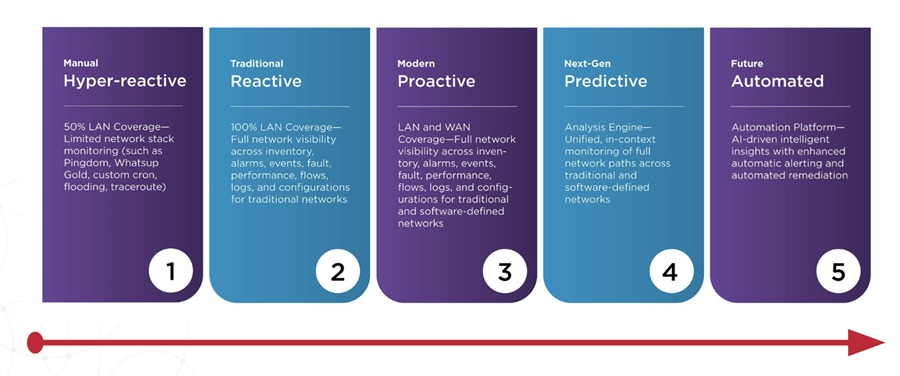I recently spent time talking with three clients about the future of the application lifecycle. The common question I got was, "Tell me what to expect with APM of the future." I'm sure this is a question on the minds of many people who manage the performance of critical business applications.
Applications are continually expanding the frequency and types of measurement data that provide real-time status. Gone are the days when information was sparse and difficult to handle. Today's information is easily available and in multiple structured and unstructured forms. Now information is available through logs, metrics, events, change, topology and activities. While in the past this was on the order of 5-15 minutes, information is now available multiple times a minute. Such information is a rich source of untapped insights.
Applications are being promoted to production more frequently. Past updates were made on the order of months. Applications are now being updated in days and weeks, resulting in Continuous Delivery supported by DevOps. Applications need to be managed throughout the continuous delivery cycle and no longer separately in development, staging or production. Apps are now being driven into production every day, bringing in a new set of challenges.
In order to drive Continuous Delivery, applications are being built in highly dynamic cloud environments. These cloud environments mostly rely on traditional on-prem transaction systems, which are reliable, scalable, highly secure and fully auditable. It is almost guaranteed that your critical applications will be hybrid from the start.
All this means Application Performance Management (APM) is fundamentally changing. Traditional rules and requirements don't apply anymore. Adapting to changes in the industry, APM needs to focus on 3 distinct areas:
Cognitive APM Should be on Your Radar
With the expansion of measurement data, it is practically impossible to derive insights using traditional manual techniques. Foundationally, APM solutions have to build on cognitive and analytic foundations. APM solutions need to be able to learn patterns and predict problems before they happen, as well as suggest and automate actions with a high rate of reliability. Cognitive systems are enabling real-time APM.
APM is an integral part of DevOps
APM is not just applicable to production systems and not simply a tool for IT Ops. With the advent of DevOps, APM needs to be introduced at the development phase to enable the verification of production readiness across code releases, validation of production scale, and establishment of production acceptability guidelines. Effectively, APM is the glue that ties together the building, running and managing of applications. This accelerates DevOps and gives development and operations a common language to communicate.
Managing hybrid environments
APM views have traditionally been in siloes, with multiple solutions stuck together to deliver a larger value proposition with limited success. Lately, that same concept is driving the emergence of tools specializing in cloud and new workloads, primarily open-source based.
Then we have traditional on-premises middleware being managed by older APM systems, furthering the silos of information. Focusing on depth of APM capabilities in Cloud rather than breadth of monitoring (Hybrid Cloud) only creates more complexity in APM, contrary to delivering on ROI. APM solutions need to support fully hybrid workloads and give one view to be really useful.
Accomplishing these 3 things will make APM truly helpful in enabling digital transformation. APM in this digital era is morphing into an intelligent ecosystem of solutions that goes well beyond traditional use cases, meaning APM should expand significantly in the future.
Arun Biligiri is APM Offering Management Leader at IBM.


